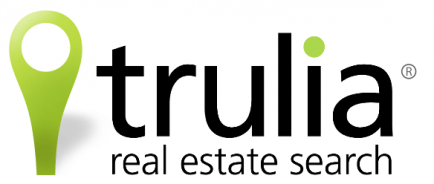Real estate listings and search site Trulia has just made its debut on the New York Stock Exchange under the symbol “TRLA.” The company’s stock opened at $22.10, up 30 percent from the company’s pricing. This puts Trulia’s valuation at around $580 million. Yesterday, Trulia priced its shares at $17 per share, above the expected range of $14 to $16 per share. Trulia raised $102 million in the offering.
During early trading shares soared as much as 40 percent, eventually closing at $24.08 per share.
Trulia, which filed to go public in July, is seeing around 22 million monthly unique visitors, up from 5 million in June 2009. Paid subscribers — its primary source of revenue, in addition to online ads — have also grown significantly.
Revenues in the six months ending in June are up from last year $29 million today versus $16 million for the period a year ago ($38.5 million for all of 2011). Meanwhile, net losses are also growing: they’re now at $7.6 million ($6.2 million last year). Average revenues per user are up and are at $1,318 compared to $1,194 a year ago for the first six months of the year, or $140 versus $91 for monthly revenues.
Trulia has raised $32.8 million in funding from Sequoia, Accel and others. The company’s primary competitor is Zillow. Zillow recently sued Trulia for patent infringement.
For basis of comparison, Zillow shares soared 200 percent on its first trade last year. Currently, Zillow is trading at $44.72 per share, giving the company a $1.3 billion valuation.
Another interesting point to note is that Trulia filed for its IPO privately in July. This was made possible because of a provision in the JOBs Act, which lets companies with less than $1 billion in revenue to file without listing publicly with the SEC. Trulia is one of the first companies to go public after filing confidentially. What does this mean? Well, investors didn’t have as much lead time on Trulia’s financials before he company went public. In fact, investors had little over a month compared to the standard 90 days that most companies wait between the initial S-1 filing and the day when shares begin trading on public markets. It should be interesting to see if if filing confidentially has any effect on investor response to the company’s stock.
